How to Make Chefs Coats White Again
In the current climate, purchasing new uniforms may be something you'd rather put off. And so here's a simpleiii footstep care guide on how to clean white chef jackets, and extend their lifespan.
i. Foreclose
Use an apron. It might sound basic, but it's what they're made for, and prevention is better than a cure. Given a basic apron will set yous back less than $18 and are easy to make clean, they are your front line of defence in keeping your whites stain free.
Bonus apron tip: To stop the frock straps knotting together in the wash; tie your apron straps together pre-wash. Or put them all in a wash bag, a simple, cheap 1, like you would detect in your local Kmart volition practice.
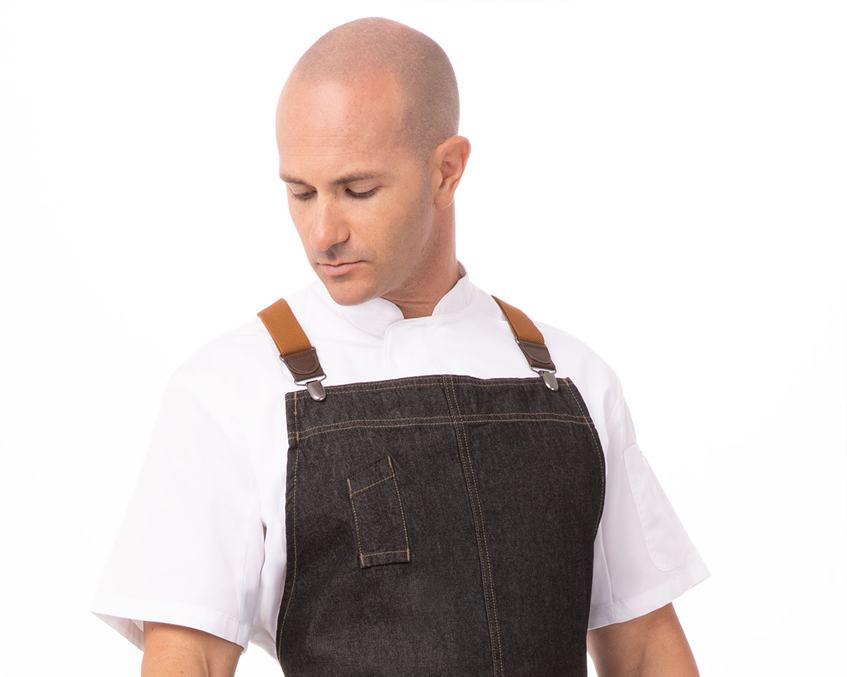
Again, it may sound overused, but 'yous become what you pay for' stands true, and a quality chef jacket will terminal longer than a inexpensive one.
Finally, there are few stain culprits to be especially conscientious of, as they are hard to remove. Aside from the well-known offenders like cherry-red wine and lycopersicon esculentum sauce; Tumeric, red chilli oil and even chocolate need increased attention.

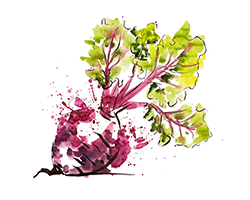
2. Treat
No matter the quality of the jacket, let's confront it, even so careful, the jacket'due south going to get stained. Whether it's gravy, blood or the dreaded beets, treat them apace and wash them right.
Firstly, let's starting time with one of the most misunderstood aspects of stain removal; washing in hot vs cold h2o.
The supposition is whites are better in warm to hot, and colours in the cold. Even so, this isn't necessarily the case. The colour of the jacket isn't the determining gene, simply the characteristics of the stain; or more accurately what caused the stain, that dictates the temperature of the h2o.
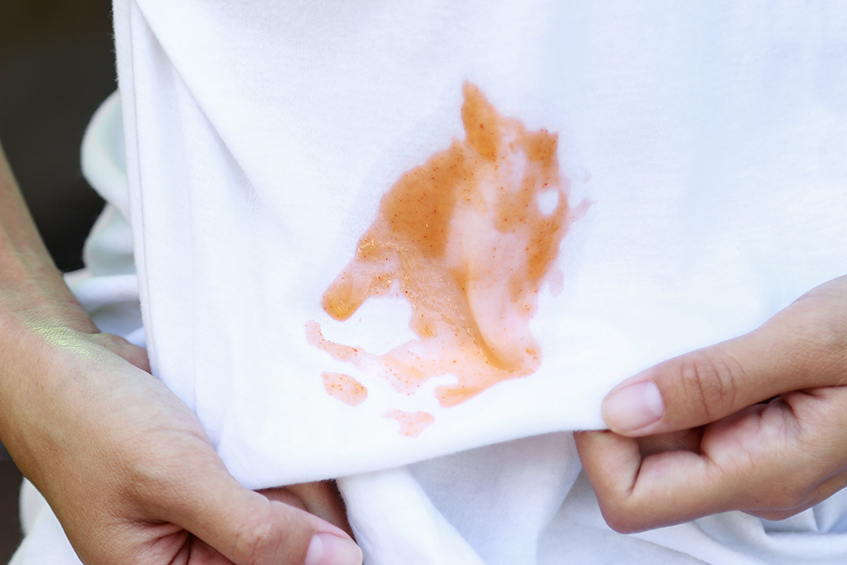
If information technology's a poly peptide or a food stain, start with cold water, not hot. Hot water may set up the stain, becoming baked into the fabric. Common cold water as well used for that white marker yous get on your black jackets from deodorant, as information technology contains protein.
If it's oil, butter or coffee, a hot water launder should work well in removing the stain.
Finally, blood. Over again human action quick and sponge the area with common cold h2o, equally heat will set the stain. Too much water may assistance it spread, and so be careful here. Then hit it with the (bleach-free) pre-stain handling and allow it sit for 15 minutes, before rinsing.
Given you're unlikely to have access to a washing machine at the time, try to soak the jacket in water. A spare sink (skillful luck), or non-metal container will practice the fox. Ideally, with some quality detergent rubbed in.
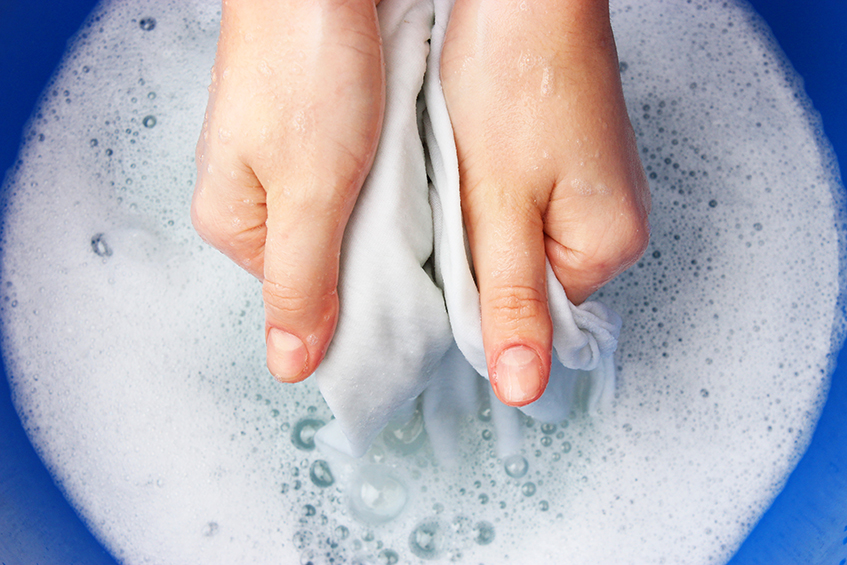
Failing that, white distilled vinegar, club soda and baking soda/cornstarch can work wonders on nutrient-based stains. If it's oil or butter, use some diluted dishwashing soap.
You can get it in the washing machine when you lot go home, once again post-obit the temperature information above. Try to follow the care characterization as much equally possible.
Now, the fact is your jacket is likely to resemble a rainbow of stains when y'all get home; and knowing the origin of each is unlikely. And so I'd say start with cold h2o and go from in that location.
As far every bit laundry detergents get, you need one with enzymes, given the majority of stains will exist food-based. Try to utilize specific stain removing laundry additive, instead of chlorine bleach to effort to 'plaster' over the stain (more on that afterward).
Not until you're completely satisfied that you've done all y'all tin can to tackle the stain should you utilise the dryer, as the heat will again bake that bad boy right in there. Best to line dry if you can.
Equally you'll want to hit the stain quickly, information technology'southward best to accept a spare jacket at the prepare, so you quickly switch them out. Granted that's easier said than done mid-service, deep in the weeds. Let's say, the sooner, the better.
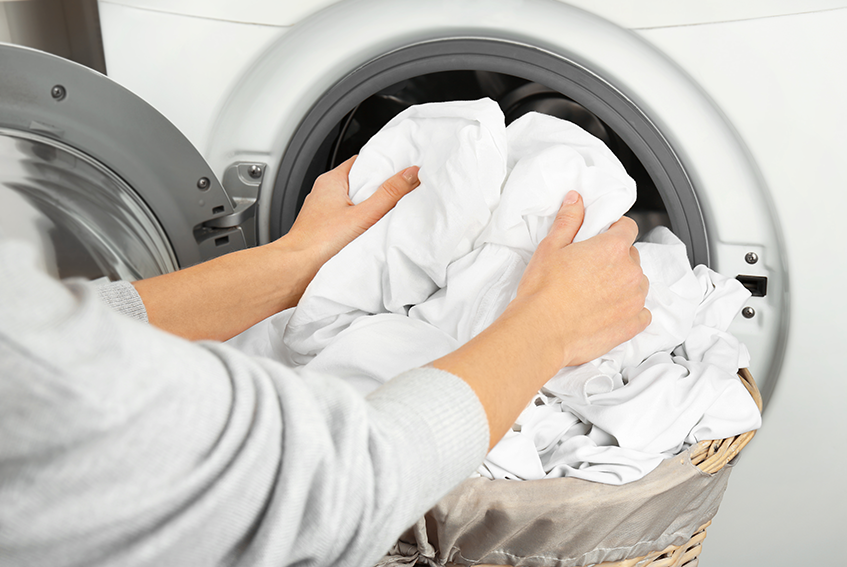
3. Keep your chef whites – white.
A yellowed chef white isn't the best look. Only neither is a jacket fix to fall apart from hardcore bleaching.
The reason is that chlorine bleach will firstly impairment the fibres and you'll be 1 footstep closer to that new jacket. Information technology volition have a counterproductive result and cause the coat to yellow, peculiarly on any mesh panels. To add insult to injury, if you accept any embroidery on the jacket, it's likely to bleach that and fade the colour out.

Now, this doesn't mean all bleaches are evil. Oxygen based chlorine is an active ingredient of many fabric whitening products (retrieve Oxi-Activeness). It is a gentle bleach, oft used for laundry purposes. So it's safer on fibres. Anything stronger you're risking fabric corrosion and embroidery whitening.
To re-whiten your whites, soak your jacket in a sink or bucket with h2o + one cup of oxygen-based bleach for one-2 days. Then information technology's ready for the washing machine.
Pro Tip: Powdered oxygen bleach will work better than liquid.
Bonus Tip: White distilled vinegar, added to the wash tin help leave the finished jacket looking sharp, as it volition remove any backlog detergent residue.
It's a bit of work, and you may not fancy yourself as a domestic god or goddess. But follow the tips in a higher place, and you'll prolong the life of your chef jackets.
Declining this, and the jacket's too far gone, you lot tin can grab yourself a new one hither.
Good luck and stay prophylactic Chef.
At Chef Works, nosotros are driven by those who are inspired by all things culinary. Fueled by the conventionalities that every culinary professional deserves the right apparel and tools to raise the work they do. We understand that the recipe for excellence goes far beyond unproblematic ingredients.
cromptonthold1963.blogspot.com
Source: https://www.chefworks.com.au/how-to-clean-white-chef-jackets
Enregistrer un commentaire for "How to Make Chefs Coats White Again"